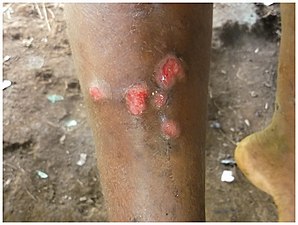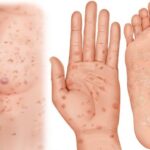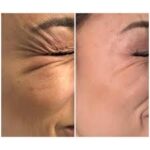Yaws is a chronic infectious disease caused by Treponema pallidum pertenue, a bacterium closely related to the one that causes syphilis. This disease primarily affects the skin, bones, and cartilage, and is most prevalent in tropical regions of Africa, Asia, and the Pacific. Yaws progresses in distinct stages, and when left untreated, it can enter a dormant phase known as latent yaws. This phase is asymptomatic but still requires medical attention to prevent severe complications.

This article provides a comprehensive overview of latent yaws, covering its transmission, clinical progression, diagnostic methods, treatment protocols, and prevention strategies.
What Is Latent Yaws?
Latent yaws refers to the stage of yaws where an individual remains infected with Treponema pallidum pertenue but does not exhibit active skin lesions or other visible symptoms. This phase follows the primary and secondary stages of the disease and can last for months or even years.
Although latent yaws is not contagious, untreated cases can eventually progress to tertiary yaws, which can cause severe and irreversible damage to bones and soft tissues.
Stages of Yaws and Progression to Latent Phase
Yaws develops through several clinical stages:
- Primary Yaws: The infection begins with a mother yaw, a painless ulcer that appears at the site of bacterial entry, usually on the limbs. This lesion heals within a few weeks without treatment.
- Secondary Yaws: If untreated, the bacteria spread, leading to multiple skin lesions, swollen lymph nodes, and bone pain. This stage is contagious.
- Latent Yaws: The infection enters a dormant phase with no visible symptoms, but the bacteria remain in the body.
- Tertiary Yaws: In some untreated cases, the disease reactivates after several years, causing severe disfigurement, ulcerative lesions, and bone destruction.
Transmission of Yaws and Risk Factors
Yaws is primarily transmitted through direct skin contact with the lesions of an infected person, particularly among children living in humid, tropical environments. The disease thrives in overcrowded and unsanitary conditions.
Key Risk Factors for Yaws Infection:
✔️ Close contact with infected individuals
✔️ Poor hygiene and lack of access to clean water
✔️ Living in endemic tropical regions
✔️ Limited healthcare access
Once an individual enters the latent phase, they are no longer infectious; however, without treatment, they remain at risk of developing tertiary yaws.
Diagnosis of Latent Yaws
Since latent yaws presents no visible symptoms, it is diagnosed through serologic testing, similar to syphilis. The two main types of tests used are:
1. Nontreponemal Tests
✔️ Rapid Plasma Reagin (RPR)
✔️ Venereal Disease Research Laboratory (VDRL)
These tests detect antibodies produced in response to the infection but may yield false-positive results in other treponemal infections.
2. Treponemal Tests
✔️ Treponema pallidum Particle Agglutination (TPPA)
✔️ Fluorescent Treponemal Antibody-Absorption (FTA-ABS)
These confirm the presence of T. pallidum pertenue and are essential for diagnosing latent and tertiary yaws.
A combination of both test types is recommended for accurate detection.
Treatment of Latent Yaws
The World Health Organization (WHO) recommends a single dose of azithromycin (30 mg/kg, up to 2 g orally) as the first-line treatment for all stages of yaws, including latent infections.
Alternative Treatments:
✔️ Benzathine Penicillin G (1.2 million units IM, single dose) – used when azithromycin is unavailable
✔️ Tetracycline or Doxycycline – for penicillin-allergic patients, though less commonly used
✔️ Follow-up serologic testing is required at 6 and 12 months after treatment to confirm bacterial clearance.
Preventing Yaws and Eradication Efforts
1. Mass Drug Administration (MDA)
WHO launched the “Yaws Eradication Strategy (Morges Strategy)” in 2012, aiming to eliminate yaws through community-wide azithromycin distribution in endemic regions.
2. Improved Hygiene and Public Awareness
✔️ Promoting personal hygiene and regular washing with soap and water
✔️ Educational campaigns to raise awareness in endemic regions
3. Early Diagnosis and Treatment
✔️ Active case finding through community screenings
✔️ Rapid treatment of detected cases to break transmission chains
By implementing these strategies, WHO aims to eradicate yaws by 2030.
Latent yaws is a silent but critical phase of the disease that, if untreated, can progress to severe complications. Early detection through serologic testing, coupled with timely antibiotic treatment, is essential to prevent progression. With global efforts in mass drug administration, improved sanitation, and health education, yaws eradication is within reach.
Regular screening and treatment of infected individuals remain the most effective strategy in controlling this neglected tropical disease.

